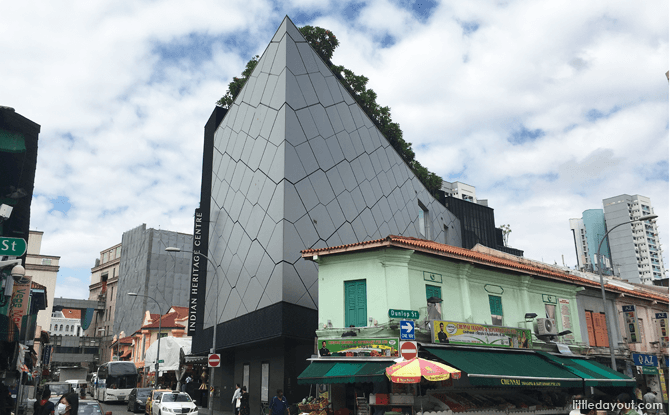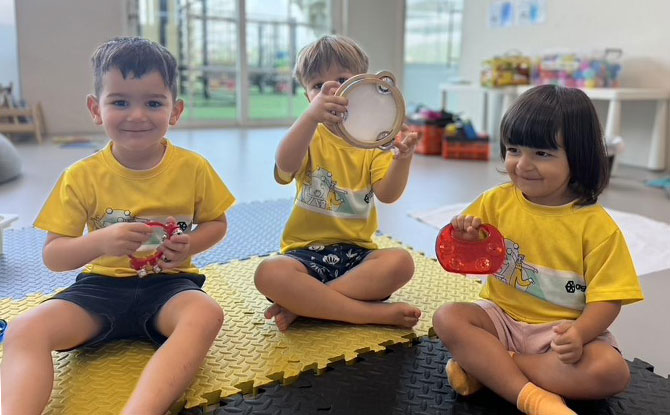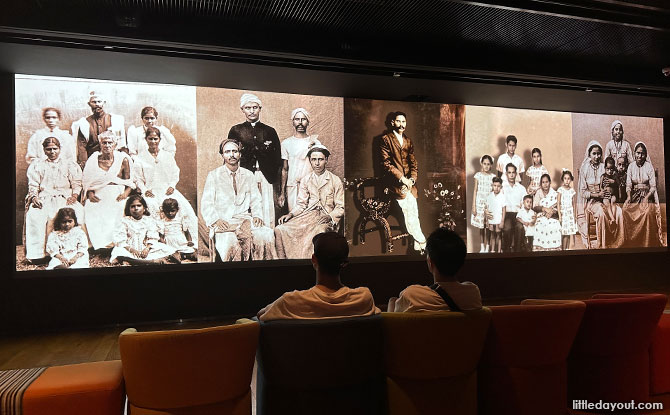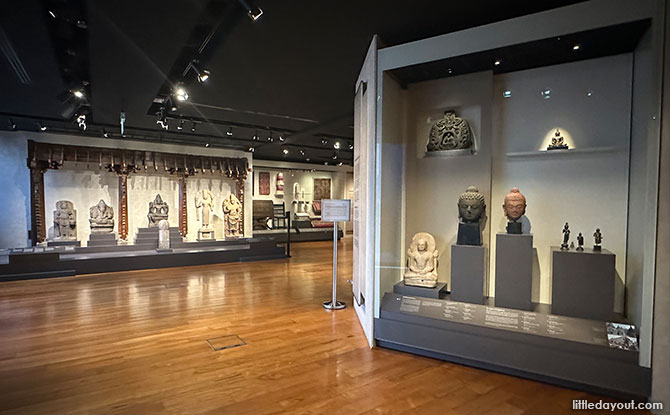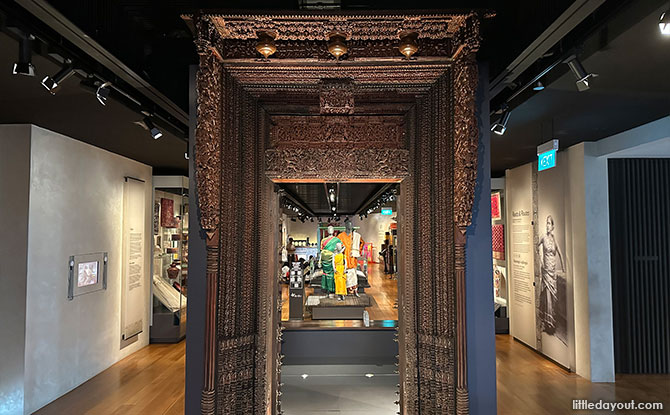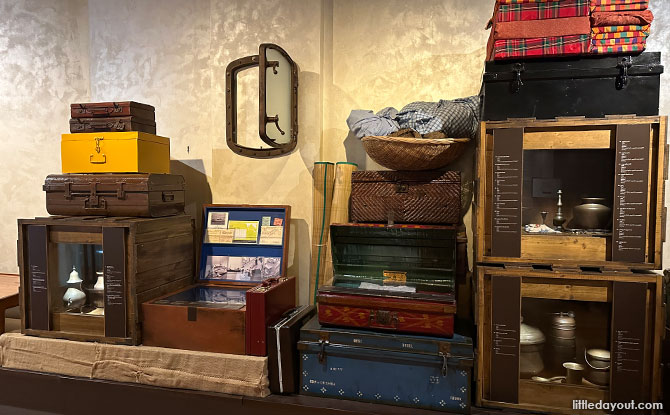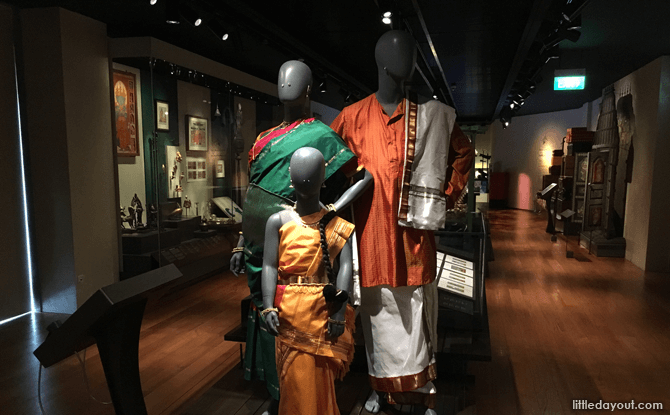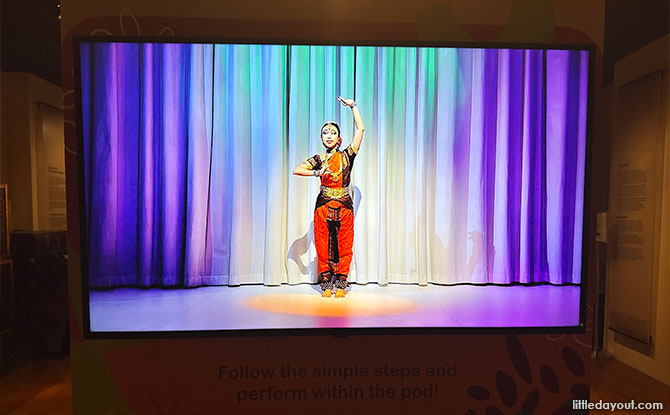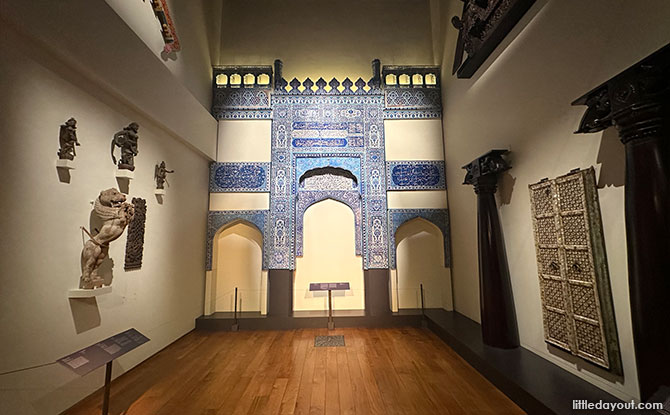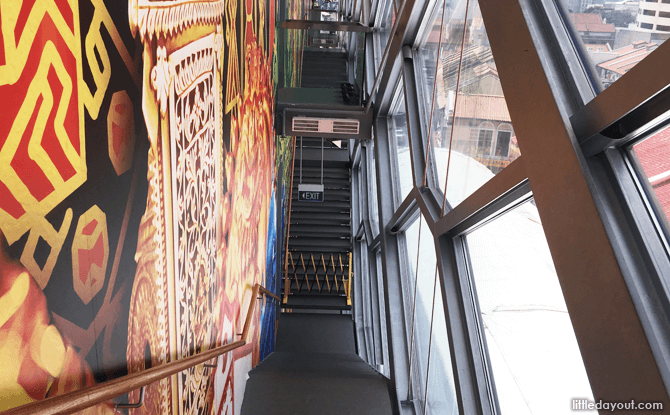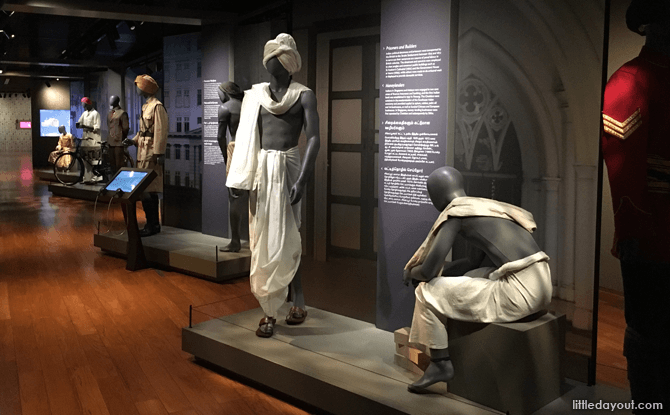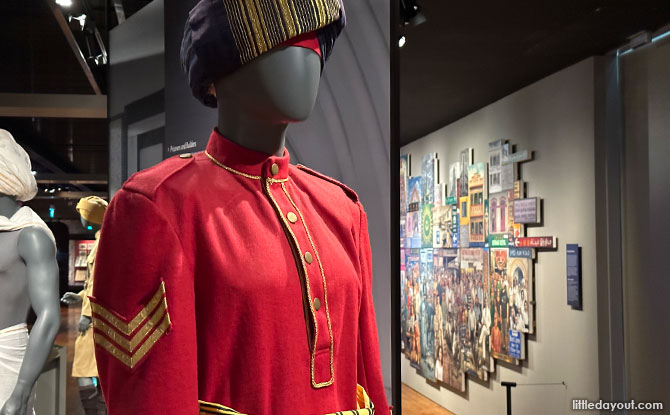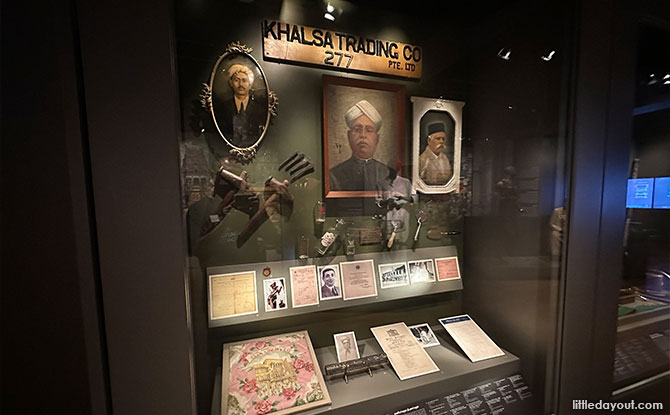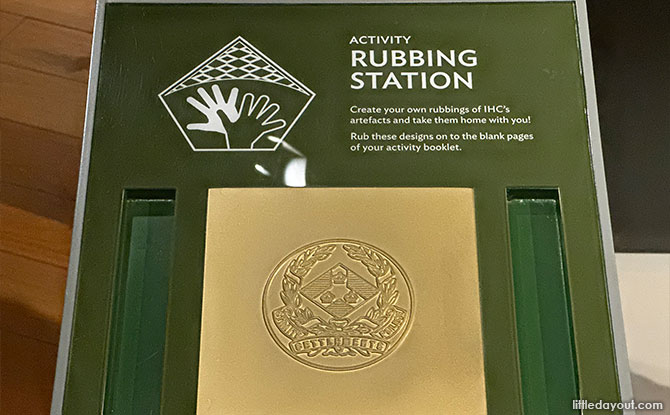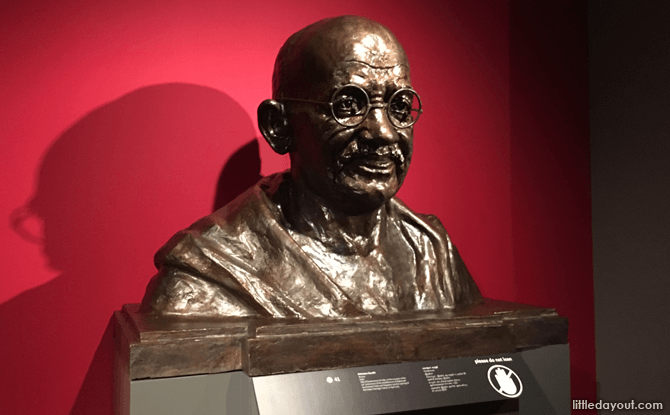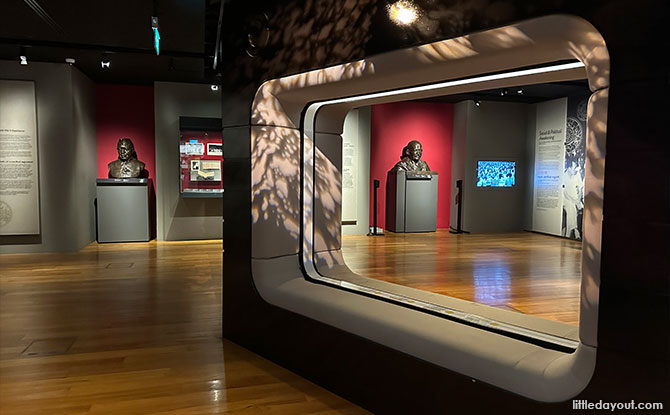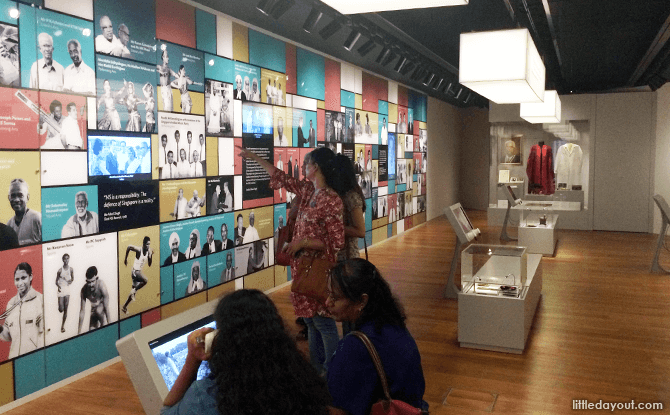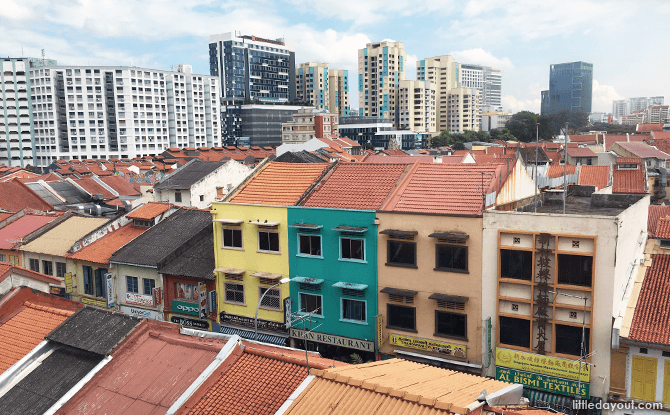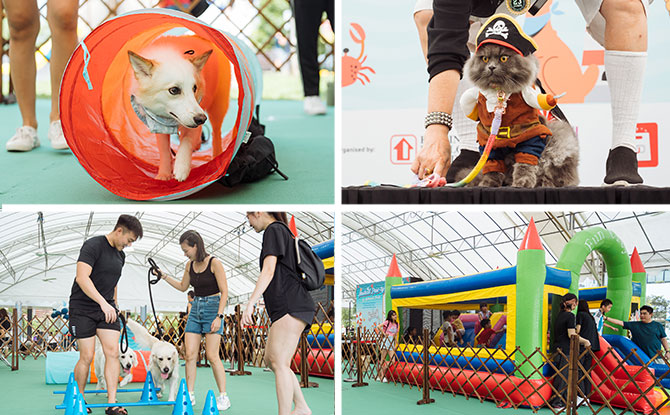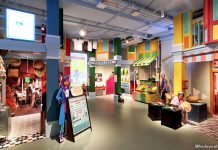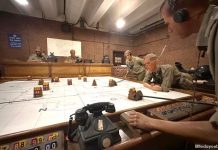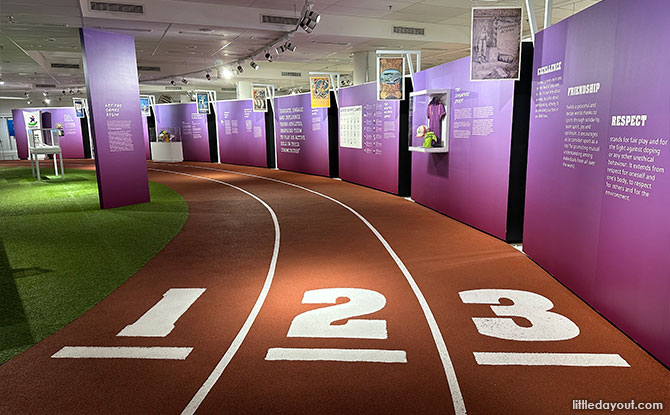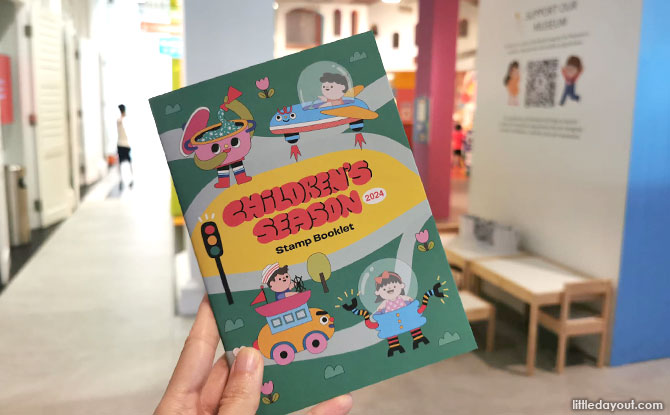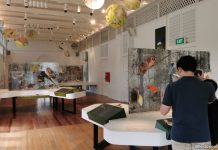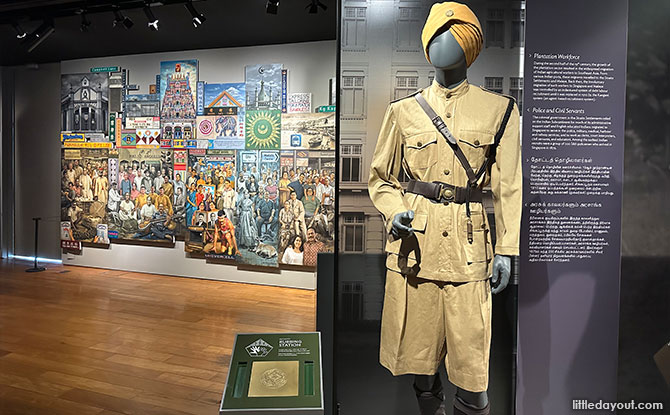
Located at the start of Little India at the junction of Serangoon Road and Rochor Road, the Indian Heritage Centre along Campbell Lane is the perfect introduction to this historic district of Singapore.
Opened in 2015, the Indian Heritage Centre captures the story of early Indian immigrants to Singapore and their pioneering contributions. Its permanent galleries are spread over two storeys in the four-storey building and organised around five themes.
After picking up a ticket from the counter on the ground floor, you can take the lift up to the fourth storey where the exhibition begins.
Year-end Holiday Camps: Discover Fun and Exciting Camps for Kids; Book Early
Farm Fright: Join City Sprouts For Their Halloween Bash On 26 Oct
Before entering the galleries proper, this is a screening room where you watch a 10-minute video presentation about the Indian community in Singapore.
The informative video is organised along the same fives themes as the gallery and provides a good overview of what is come.
Early Contact: Interactions Between South and Southeast Asia
The first section of the gallery, Early Contact: Interactions Between South and Southeast Asia, takes a look the early interactions between the South Asian sub-continent and Southeast Asia.
This can be seen through various exchanges on the religious and trade front. There are traces of these interactions in the architecture, language, art, rituals and food. As such, there have long been connections between South Asia and Southeast Asia, stretching all the way back to the start of the Common Era.
On display are artefacts such as religious statues that illustrate how the two region’s cultures influenced each other.
The Europeans arrived in the 16th century, and this further deepened the trade networks. India was a hub for trade with textiles being coveted by trading companies such as the East India Company and the Dutch East India Company, and traded for spices before being sold in Europe.
Singapore was at the heart of the maritime trade route in Southeast Asia.
Roots and Routes: Origins and Migrations
Singapore’s South Asian communities came from diverse part of the Indian sub-continent. These include regions that are now countries like India, Bangladesh, Pakistan, Sri Lanka and Nepal.
There were several waves of migration from South Asia to Southeast Asia.
The next section, Roots and Routes: Origins and Migrations, traces the traditions that were brought over from India by the migrants as well as the arduous journey they undertook to get to Singapore.
Large-scale migration from India to the Malay peninsula took place in the 19th and 20th centuries. This was when both labourers and professional migrants made their way to destinations like Penang and Singapore.
Pictures and artefacts in this section of the Indian Heritage Centre show different aspects of Indian culture, for example, language, clothing and trades, and how they were brought over by migrants.
You can also to explore the sea journey early migrants made to get to Southeast Asia at a display made out to look like trunks packed for a voyage.
There is also an interactive station where you can try out an Indian dance by following the instructions on the screen.
The Roots and Routes: Origins and Migrations section ends at a balcony that overlooks the floor below where the permanent gallery continues. From the balcony, you can see the tiled facade of a mosque from the Multan region in Pakistan which also reflects Persian influence.
To the left of the balcony is a sliding door leading to steps that bring you to the floor below. However, on a recent visit to the Indian Heritage Centre, the access to the stairs was unavailable. If that is your experience, you may have to take the lift down to the floor below.
Pioneers: Early Indians in Singapore and Malaya
The exhibition continues with the spotlight cast on early Indian pioneers in 19th and early 20th century Singapore. These pioneers distinguished themselves in their trade and occupations.
Early pioneers were engaged in different occupations include being merchants and private financiers.
One of the earliest groups to arrive were the Tamil Muslims or chulias. They were traders who traded in a wide range of commodities.
There were also South Asian labourers who helped to construct Singapore’s infrastructure.
Others were engaged by the colonial government and served as militia, police or in other colonial positions.
The whole range of occupations that the early pioneers took up are represented by mannequins dressed in uniforms and work wear.
To explore these further, there are cabinet displays that showcase various trades.
There are also rubbing stations but you will need to bring along your own paper and pencils for this.
Social and Political Awakening of Indians in Singapore and Malaya
By the 20th century, there was a growing nationalist movement in India. This was bolstered by World War II and led by giant figures from history such as Gandhi.
The next section of the permanent gallery recounts this wave of nationalism and how it spilled over to the Indian diaspora in places such as Singapore as well.
Making of the Nation: Contributions of Indians in Singapore
Making of the Nation: Contributions of Indians in Singapore is the final section of Indian Heritage Centre’s permanent gallery focusses on contributions made by the Indian community to Singapore. Artefacts on display provide a personal look at luminaries such as S Rajaratnam.
The Indian Heritage Centre celebrates the diversity of Indian culture and traditions. As with most museums, the longer you take to appreciate the exhibits, the more you will get out of the visit.
Once you are done at the Indian Heritage Centre, step back outside to Little India with a deeper appreciation of the long and rich history of the Indian community in Singapore.
Indian Heritage Centre Open Houses
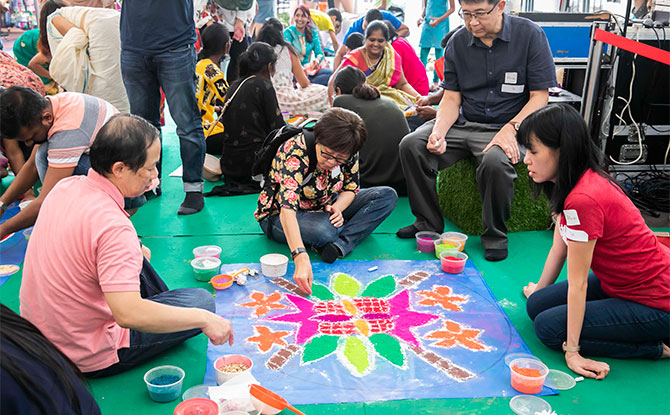
The Indian Heritage Centre also holds open houses throughout the year, especially around major festivals. Keep a look out for events such as the Deepavali Open House and Pongal Open House celebrations.
These open houses often feature kid and family friendly booths where visitors get to experience different cultural activities.
Indian Heritage Centre
Address: 5 Campbell Lane, Singapore 209924
If you are looking for more things to do in Little India, be sure to check out our Little India guide.
There is also a “flyaway balloon” playground not too far from the Indian Heritage Centre at Race Course Road.


